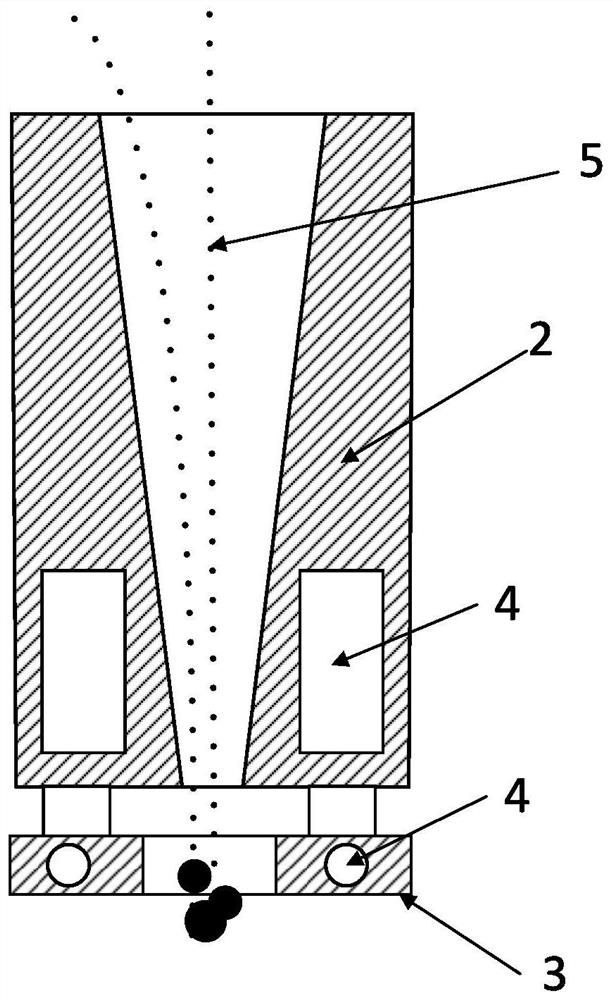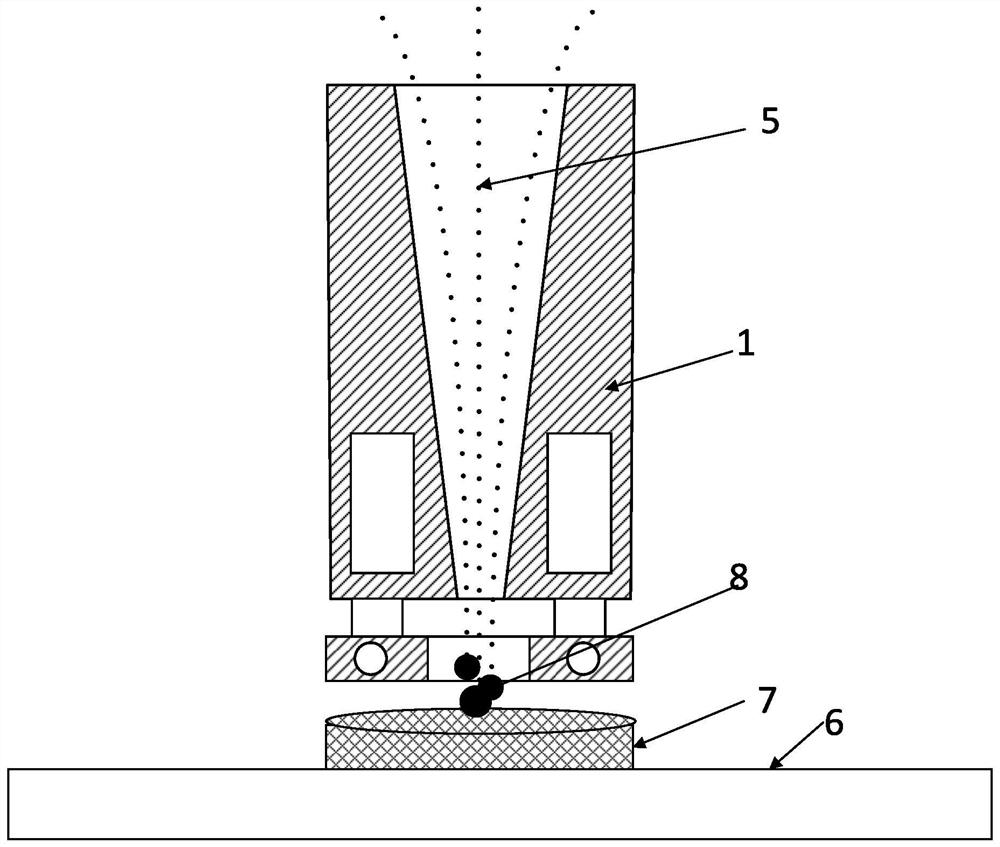A direct-write metal 3D printing method based on induction melting
An induction melting and three-dimensional printing technology, applied in the field of additive manufacturing, can solve the problems of inability to realize parallel molding, stress accumulation, and slow molding speed, and achieve the elimination of molding thermal stress problems, elimination of residual stress accumulation, and reduction of surface roughness Effect
- Summary
- Abstract
- Description
- Claims
- Application Information
AI Technical Summary
Problems solved by technology
Method used
Image
Examples
Embodiment Construction
[0032] The present invention will be described in further detail below in combination with specific embodiments.
[0033]The invention provides a direct writing induction melting molding nozzle, such as Figure 1-2 As shown, the direct-writing induction melting molding nozzle 1 is an integrated structure with an internal powder feeding channel 2 and an induction coil 3, and the induction coil 3 is a high-frequency induction coil or an intermediate-frequency induction coil, which is fixedly arranged inside The outlet end of powder feeding channel 1. The shape of the internal powder feeding channel 2 requires that the cross-section of the channel be any polygon or a closed curve, and the size of the internal powder feeding channel 2 requires that a single metal powder 5 with the largest particle size can pass through without hindrance. A cooling water circulation channel 4 is provided inside the outer wall of the internal powder feeding channel 2 and inside the induction coil 3...
PUM
 Login to View More
Login to View More Abstract
Description
Claims
Application Information
 Login to View More
Login to View More - R&D
- Intellectual Property
- Life Sciences
- Materials
- Tech Scout
- Unparalleled Data Quality
- Higher Quality Content
- 60% Fewer Hallucinations
Browse by: Latest US Patents, China's latest patents, Technical Efficacy Thesaurus, Application Domain, Technology Topic, Popular Technical Reports.
© 2025 PatSnap. All rights reserved.Legal|Privacy policy|Modern Slavery Act Transparency Statement|Sitemap|About US| Contact US: help@patsnap.com


